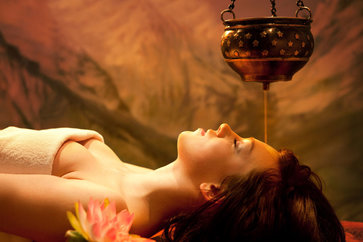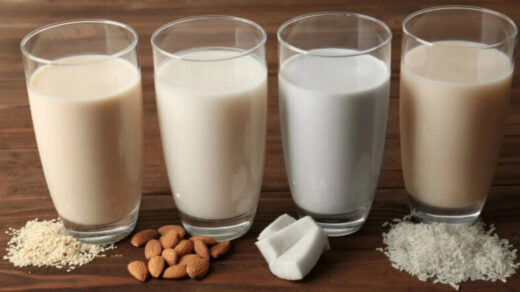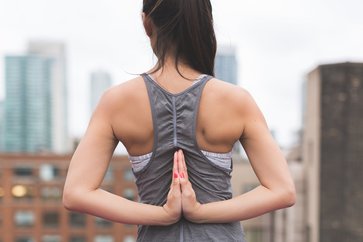How to Remove Dark Circles Under Eyes Permanently at Home
Dark circles under the eyes are characterized by a darker pigmentation or shadowing around the lower eyelid area. This common condition can vary in intensity, ranging from mild to severe, and may be accompanied by puffiness or swelling.

The skin under the eyes is naturally thinner and more delicate than other areas of the face, which can make dark circles more noticeable. Factors such as poor blood circulation, heredity, or lifestyle choices like inadequate sleep, dehydration, or excessive stress contribute to the development of dark circles.
In some cases, they may also indicate underlying health issues such as allergies, sinus problems, or nutritional deficiencies. While dark circles are not usually a sign of a serious health concern, they can affect a person’s appearance and confidence, often leading to the desire for remedies that target the root causes.
Ayurvedic Understanding of Dark Circles
Ayurveda, the ancient system of medicine from India, emphasizes a holistic approach to health, which includes understanding the root causes of conditions rather than just treating symptoms.
In Ayurveda, dark circles are often linked to imbalances in the three doshas: Vata, Pitta, and Kapha. Each dosha has its unique characteristics, and when one or more of these doshas are out of balance, it can manifest as dark circles under the eyes.
1. Vata: The Vata dosha is associated with the elements of air and space, and it governs movement and circulation in the body. When Vata is out of balance, it can lead to dryness and dehydration, especially in the skin.
This dryness causes the skin under the eyes to appear thinner and more prone to showing dark circles. Stress, lack of sleep, and emotional tension are also common contributors to Vata imbalances, which can exacerbate the problem.
- Key symptoms: Dry, flaky skin, under-eye puffiness, and tired eyes.
2. Pitta: The Pitta dosha is connected to the elements of fire and water and governs heat and metabolism in the body.
An excess of Pitta can lead to inflammation and excessive heat, which may cause blood vessels under the eyes to dilate, resulting in a reddish or brownish discoloration.
Poor digestion and emotional stress can also trigger a Pitta imbalance, leading to more noticeable dark circles.
- Key symptoms: Redness, irritation, inflammation, and pigmentation under the eyes.
3. Kapha: The Kapha dosha is linked to the elements of earth and water and governs structure, stability, and lubrication in the body.
When Kapha is imbalanced, it can lead to fluid retention and congestion, causing the skin around the eyes to appear puffy and dark. Kapha imbalance may be aggravated by excess mucus, sluggish digestion, or lack of movement.
Key symptoms: Puffy, swollen eyes with dark circles, a feeling of heaviness.
Factor Causing Dark Circles
In addition to dosha imbalances, several lifestyle factors also contribute significantly to the formation of dark circles:
1. Stress: Chronic stress leads to hormonal imbalances, which can aggravate both Vata and Pitta doshas. Stress also interferes with blood circulation, causing the skin around the eyes to become dull and discolored. Additionally, stress can result in poor sleep, which further worsens dark circles.
2. Sleep Deprivation: A lack of sleep is one of the most common causes of dark circles. It can exacerbate Vata imbalances, leading to dryness and fatigue. Sleep is essential for the body’s restorative processes, including skin rejuvenation. Insufficient sleep reduces the body’s ability to repair itself, causing the under-eye area to appear darker.
3. Poor Diet: A diet lacking essential nutrients, particularly vitamins like Vitamin C and Vitamin K, can weaken the skin and cause blood vessels to become more visible under the eyes. Excessive consumption of salty, spicy, or processed foods can lead to water retention and inflammation, contributing to dark circles. Pitta imbalances, in particular, are aggravated by an improper diet, leading to pigmentation under the eyes.
4. Dehydration: Inadequate water intake causes dehydration, which directly affects skin health. Dry, dehydrated skin tends to appear more tired, dull, and prone to discoloration. This can make dark circles more prominent, especially around the delicate under-eye area. Ayurveda emphasizes hydration as an essential part of maintaining balanced doshas and healthy skin.
By identifying and addressing these internal imbalances and lifestyle factors, Ayurvedic treatments can help restore harmony to the body and reduce the appearance of dark circles.
Additional Factors Contributing to Dark Circles
1. Genetics: Genetics plays a significant role in the development of dark circles. If one or both of your parents have dark circles, you’re more likely to develop them as well. Your genetic predisposition can influence factors like skin tone, skin thickness, and the visibility of blood vessels under the eyes. People with fairer skin tend to have more noticeable blood vessels, making dark circles more apparent.
2. Aging: As we age, the skin naturally loses collagen and elasticity, causing it to thin. This makes blood vessels more visible, especially around the delicate under-eye area. Additionally, as the fat around the eyes diminishes with age, the skin can hollow, creating shadows that contribute to the appearance of dark circles. These changes are a natural part of the aging process and can exacerbate the look of dark circles.
3. Lack of Sleep: Inadequate or poor-quality sleep is one of the most common causes of dark circles. Sleep deprivation leads to vasodilation, which is the dilation of blood vessels under the eyes. This increased blood flow can cause the area to darken and appear bluish. Moreover, lack of sleep can lead to fluid retention and puffiness, making dark circles even more prominent.
4. Allergies and Sinus Issues: Allergic reactions and sinus congestion can cause inflammation and swelling in the under-eye area. This can lead to both puffiness and darkening of the skin. Common allergens such as pollen, dust, and pet dander can trigger these reactions, making the skin around the eyes appear darker and more tired. Sinus issues may also result in fluid buildup around the eyes, contributing to the formation of dark circles.
5. Dehydration: Dehydration can cause the skin under the eyes to appear dull, dry, and sunken. When the body is lacking in hydration, it prioritizes other organs and systems over the skin, leading to the appearance of tired eyes. The under-eye area, being delicate and thin, is particularly affected, and dehydration can make dark circles more pronounced.
6. Sun Exposure: Excessive sun exposure can lead to an increase in melanin production, the pigment responsible for skin color. This hyperpigmentation can affect the skin around the eyes, making dark circles more visible. Prolonged sun exposure can also thin the skin, leading to more noticeable blood vessels under the eyes.
7. Lifestyle Factors: Certain lifestyle habits can exacerbate the appearance of dark circles. Smoking and excessive alcohol consumption can affect blood circulation, reduce skin health, and cause premature aging, all of which contribute to the formation of dark circles. Additionally, a poor diet lacking in essential vitamins and nutrients can make the skin under the eyes look dull and unhealthy. A diet rich in antioxidants, vitamins, and minerals is essential for maintaining healthy skin and preventing dark circles.
Ayurvedic Remedies for Dark Circles
Ayurveda offers a variety of natural treatments that aim to restore balance to the body and address the root causes of dark circles.
These remedies focus on nourishing the skin, improving circulation, and balancing the doshas through herbal oils, herbs, dietary changes, and proper hydration.
1. Kumkumadi Oil
Kumkumadi oil is a revered Ayurvedic remedy known for its skin-brightening and anti-aging properties. It is made from a blend of saffron, sandalwood, and other nourishing herbs.
This oil helps improve blood circulation around the eyes, reduces pigmentation, and moisturizes the skin, making it an effective treatment for dark circles. Regular use can lighten the skin and promote a healthy, glowing complexion.
- How to Use: Gently massage a few drops of Kumkumadi oil under the eyes before bed. Leave it on overnight for best results.
2. Ghee
Ghee, or clarified butter, is a deeply nourishing and moisturizing substance used in Ayurvedic skincare. It is known to hydrate the delicate skin under the eyes, reducing dryness and promoting overall skin health.
Ghee can also help rejuvenate the skin by improving its elasticity and reducing the appearance of fine lines and dark circles.
- How to Use: Apply a small amount of ghee under your eyes before bedtime. Gently massage it in and leave it overnight for deep nourishment.
3. Ashwagandha
Ashwagandha is an adaptogenic herb commonly used in Ayurveda to reduce stress, support the nervous system, and promote restful sleep. Since stress and sleep deprivation are major contributors to dark circles, ashwagandha can help restore balance to the body, reduce tension, and improve the quality of sleep, indirectly reducing the appearance of dark circles.
- How to Use: Ashwagandha can be taken as a powder or capsule, usually with warm milk or water, before bedtime.
4. Brahmi
Brahmi is a powerful herb that calms the mind, reduces stress, and supports cognitive function. It is also beneficial for the skin, promoting healing and rejuvenation.
Brahmi helps improve circulation and reduce puffiness, which makes it a great herb for dark circles. Regular use of Brahmi can help rejuvenate both the mind and skin, providing holistic support.
- How to Use: Brahmi can be consumed in powdered form or as a supplement. It can also be applied topically in the form of a paste for localized skin rejuvenation.
5. Cooling and Hydrating Foods
To balance Pitta and Kapha doshas, Ayurveda recommends consuming cooling, hydrating foods. These include fruits and vegetables with high water content, such as cucumbers, melons, and leafy greens.
These foods help hydrate the body, improve skin elasticity, and reduce inflammation, contributing to a healthy, glowing complexion.
- Examples: Cucumber, coconut water, watermelon, mint, and lettuce.
6. Importance of Proper Digestion
Ayurveda emphasizes the importance of Agni (digestive fire) for overall health. Poor digestion leads to toxin buildup (Ama) in the body, which can affect skin health and contribute to dark circles.
It’s essential to avoid heavy, spicy, or greasy foods that can disrupt digestion and cause imbalances in the body. A light, easy-to-digest diet helps support clear, radiant skin.
- Recommendations: Include easy-to-digest foods like soups, dals (lentils), and warm cooked vegetables, while avoiding excessive consumption of fried, processed, and spicy foods.
7. Hydration
Drinking enough water is vital for maintaining healthy skin, as dehydration can cause the under-eye area to appear dull and sunken. Ayurveda recommends consuming warm herbal teas such as Chamomile or Mint Tea to further support hydration while soothing the digestive system.
Additionally, drinking sufficient water throughout the day helps flush out toxins, improving skin health and preventing the formation of dark circles.
- Herbal Teas: Chamomile, Mint, Rose or Lemon Balm tea can help soothe and hydrate the skin while promoting overall wellness.
By combining these Ayurvedic remedies, you can support your body in reducing the appearance of dark circles. These treatments address both the physical and emotional causes, helping to restore balance and promote a glowing, refreshed appearance.
Ayurvedic Self-Care Practices
In Ayurveda, self-care is an essential part of maintaining overall health and well-being. Incorporating self-care practices into your daily routine can help reduce dark circles, rejuvenate the skin, and restore balance to the body. Here are some Ayurvedic self-care practices that specifically target dark circles:
1. Facial Massage (Abhyanga)
Massaging the Under-Eye Area with Nourishing Oils
Facial massage, known as Abhyanga, is an important practice in Ayurveda that helps improve circulation, relax facial muscles, and nourish the skin.
When massaging the delicate skin under the eyes, it’s crucial to use gentle pressure and nourishing oils like almond oil, coconut oil, or saffron-infused oils.
These oils are known for their moisturizing, anti-inflammatory, and rejuvenating properties, which can help reduce puffiness and lighten dark circles.
Increased Circulation and Skin Rejuvenation
The act of massaging the under-eye area with these oils increases blood flow, which can help remove toxins, reduce fluid retention, and improve skin tone.
Additionally, the calming effect of facial massage can help relax the muscles and reduce the stress that often contributes to dark circles. Regular facial massage promotes healthier, brighter, and more rejuvenated skin around the eyes.
- How to Do It: Gently apply a few drops of oil to the under-eye area and use your ring finger (which exerts less pressure) to lightly tap and massage in a circular motion. Massage for a few minutes before bed and leave the oil on overnight.
2. Sleep and Stress Management
Ayurveda places great importance on getting sufficient, restful sleep for overall health and skin rejuvenation. The under-eye area, being delicate, is especially sensitive to poor sleep patterns.
Lack of sleep or disrupted sleep cycles can lead to dark circles and puffiness. Aim for 7-8 hours of quality sleep each night, ensuring that your environment is peaceful, cool, and free from distractions.
- Tips for Better Sleep: Follow a consistent sleep schedule, avoid using electronic devices right before bed, and create a relaxing bedtime routine, such as drinking a cup of warm herbal tea (like chamomile) or performing light stretches.
3. Yoga, and Pranayama
Chronic stress is a major contributor to dark circles, so managing stress is essential. Ayurveda recommends meditation, yoga, and pranayama (breathing exercises) to reduce stress, improve circulation, and calm the mind.
These practices help reduce the impact of stress on the body and mind, leading to better sleep, enhanced digestion, and improved skin health.
How to Practice:
- Meditation: Dedicate 5-10 minutes each day to meditate, focusing on deep, calming breaths. This will help calm the mind and body, reducing stress-related factors contributing to dark circles.
- Yoga: Gentle yoga poses, such as Viparita Karani (Legs-Up-The-Wall Pose) or Child’s Pose, are excellent for promoting relaxation and improving circulation to the face.
- Pranayama: Breathing exercises like Nadi Shodhana (Alternate Nostril Breathing) help balance the nervous system, reduce stress, and improve oxygen flow to the brain and skin.
By adopting these Ayurvedic self-care practices, you can promote healing, balance your body’s doshas, and reduce the appearance of dark circles while enhancing overall health and wellness.
Regularly integrating these practices into your routine will not only benefit your skin but also your mental clarity and emotional well-being.
Lifestyle and Preventive Measures
Maintaining a healthy lifestyle and adopting preventive measures is crucial in not only reducing dark circles but also ensuring long-term skin health.
Ayurveda emphasizes the importance of a balanced lifestyle, which includes nourishing the body, taking care of the skin, and eliminating toxins. Here are some key lifestyle and preventive steps to help prevent and reduce dark circles:
- Avoiding Harsh Chemicals Around the Eyes:Avoid harsh chemicals like synthetic fragrances, parabens, and alcohol around the eyes, as they irritate sensitive skin. Choose natural, gentle products to prevent dryness and irritation, reducing the appearance of dark circles.
- Natural Alternatives: Look for eye creams or oils with natural ingredients like rosewater, aloe vera, cucumber extract, or shea butter, which hydrate and soothe the skin without causing irritation.
Maintaining a Healthy Routine
- Balanced Meals: Ayurveda emphasizes a Sattvic diet with fresh, natural foods like fruits, vegetables, whole grains, and lean proteins. These nourish the body, support skin health, and reduce inflammation, promoting overall well-being.
- Exercise: Regular physical activity boosts circulation, detoxification, and skin oxygenation. Exercise encourages toxin elimination through sweat, and practices like yoga and pranayama help reduce stress and enhance skin vitality, keeping the body in balance.
- Proper Skincare: A gentle skincare routine with cleansing, exfoliating, and moisturizing keeps skin hydrated and protected from pollutants. Nourishing oils like almond or rosehip oil and sunscreen help prevent aging and protect sensitive areas.
Regular Detoxification to Clear Toxins from the Body
Ayurveda places great importance on detoxification as a way to restore balance to the body. Over time, toxins (referred to as Ama) can accumulate in the body.
This leads to various skin problems, including dark circles. Regular detox practices help to flush out these toxins, improve digestion, and rejuvenate the skin.
Detox Practices:
- Herbal Teas: Drinking detoxifying herbal teas like dandelion root tea, ginger tea, or cumin-coriander-fennel (CCF) tea can help cleanse the digestive system, improve metabolism, and support skin health.
- Oil Pulling: An Ayurvedic practice that involves swishing oil (such as sesame oil or coconut oil) in the mouth to help eliminate toxins from the body, promoting clearer skin.
- Periodic Fasting: Light fasting or eating easily digestible foods on certain days can help reset the digestive system, clear toxins, and improve skin clarity.
Incorporating these lifestyle habits and preventive measures into your daily routine can help maintain healthy, radiant skin and prevent the formation of dark circles.
Dark circles under the eyes can be frustrating, but they are not impossible to eliminate. By understanding the root causes and adopting a holistic approach—combining lifestyle changes, skincare, and professional treatments—you can achieve permanent results.


























Great remedies for dark circles! I will use some of these tips for sure.